For a relatively small muscle, the biceps sure do command a lot of attention. Most gymgoers regard them as one of the quintessential glamor muscles, while bodybuilders can make (or break) their careers based on how they look on stage.
So, growing your guns is obviously important, whether you’re a physique athlete or not. And, for the intermediate or advanced lifter, that means taking a closer look at how you train each aspect of your biceps. You don’t just need more curls; you need the right biceps exercises to target the long head of the muscle so you can build a pair of peaks to be proud of.
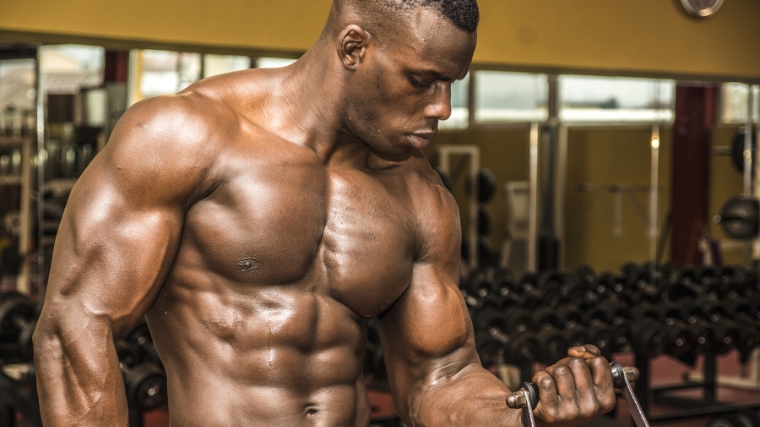
Here are five of the best biceps exercises you can do for the long head, plus some helpful training tips to dial in your next arm day even further.
Best Long Head Biceps Exercises
Incline Dumbbell Curl
To get the long head of your biceps off the bench and into the game, well, you actually need a bench. An adjustable bench, to be precise.
You’ll have the best shot of targeting the long head, and thus building a solid peak, if you can situate yourself such that your upper arm falls behind your torso.
Benefits of the Incline Dumbbell Curl
- It aligns well with the natural fiber orientation of the long head of the biceps.
- Easy to set up and perform; all you need is a bench and some dumbbells.
- Great for applying tension to the tissue at long muscle lengths, kind of like a loaded stretch.
How to Do the Incline Dumbbell Curl
Get yourself a pair of light-to-moderate dumbbells and an adjustable bench. Set the bench upright at a 45-to-60-degree angle. A lower angle isn’t necessarily better, so work with whatever is comfortable.
Sit back on the bench and allow your arms to fall behind your body. With your upper arms pinned back, curl the weights up until your forearms are higher than perpendicular to your upper arms. Lower the weights down slowly, particularly once you pass the halfway point.
Bayesian Cable Curl
Any biceps-building program worth its salt will include at least one exercise involving a cable machine. Cables are renowned among bodybuilders for their consistent, smooth tension — something you can’t get with free weights.
The nature of the Bayesian cable curl closely replicates working with dumbbells, but the line of pull of the cable itself lets you perform a movement you couldn’t otherwise do with a pair of dumbbells.
Benefits of the Bayesian Cable Curl
- Easy to set up and perform, as long as you have access to an adjustable cable station.
- Stimulates the long head of your biceps well, even with light weight.
- Great for consistent tension and getting a solid pump going at the end of your workout.
How to Do the Bayesian Cable Curl
Set an adjustable cable station so the pulley is fixed near the floor. Grab the handle in your single working arm and face away from the machine so the handle pulls your arm behind you.
Maintain an externally-rotated shoulder, with the inside of your upper arm turned toward your torso. Then, curl the weight with your biceps while taking care to keep your elbow behind your body the entire time.
Drag Curl
This movement may look like an improperly-performed barbell curl, but don’t be fooled. The drag curl is a seriously-underrated exercise, especially if you want to isolate the long head of your biceps.
By physically “dragging” the barbell up your torso, you can pull your upper arm behind your body and emphasize the long head of your biceps that much better. This move is also great for stimulating your rear delts and brachialis.
Benefits of the Drag Curl
- It’s very easy to perform; all you need is a barbell and some free space.
- Emphasizes the long head of the biceps in particular due to the technique.
- Provides some free rear delt stimulation as well.
How to Do the Drag Curl
Grab a barbell (a pre-loaded fixed straight bar will also do) and stand upright like you were about to perform a run-of-the-mill barbell curl. Keep your upper arms tucked to your sides, but instead of curling the bar outward in an arc, initiate the movement by pulling your elbows behind your body.
The barbell should lightly graze your hips and torso as it “drags” upward. Pull until you can’t move your arms behind you any further, hold for a beat, and then lower the weight back down the same way.
Seated Dumbbell Curl
If, for whatever reason, you can’t perform biceps curls with your arm behind your body, go for a standard seated curl instead. In the event your flexibility permits you from utilizing the incline curl, you can scoot your bum forward on a low seat and replicate the posture to a less-severe degree.
Seated curls, whether you lean backward on purpose or not, are an all-around excellent biceps movement. You’ll need at least one “broad” exercise when you train your arms. This movement is as good as any.
- Lets you tweak your posture slightly to emphasize long head development.
- You can lift heavy safely and take your biceps to failure.
- Allows you to work unilaterally, so you can address any potential imbalances in strength.
How to Do the Seated Dumbbell Curl
Fix an adjustable bench so it is fully upright or find yourself a low seat with a vertical backrest. Sit down with a dumbbell in each hand, then scoot your buttocks forward on the seat. This should put your upper arm just behind your torso.
From here, curl away. Ensure that your elbows stay pinned back and you aren’t using momentum to hurl the weight up. For a better mind-muscle connection, alternate your repetitions between one arm and the other.
[Read More: The Best Dumbbell Exercises and Workouts]
Cheat Curl
Biceps training may be mostly about targeted muscular stimulation, finding the exact right angle, and focusing hard on a good contraction, but you shouldn’t be afraid to go heavy on your arms.
Properly cheating allows you to overload your biceps from start to finish. The cheat curl may not be the best exercise for the long head from an anatomical perspective, but the sheer load on the tissue is unparalleled. Every fiber in your arms has to get involved.
Benefits of the Cheat Curl
- Allows you to overload your biceps without having to perform compound exercises like rows or pull-ups.
- Applies an incredible amount of mechanical tension to the target muscle.
- A great way to start off a biceps-focused workout.
How to Do the Cheat Curl
Load up a barbell with a fairly challenging weight; if you’re doing a set of six reps, choose a weight you can curl with perfect form for four.
Stand upright with the barbell in your hands. Take a deep breath and initiate the curl by swinging your hips back and forward to generate a bit of momentum. Use that momentum to curl the weight up. At the top, pause for a second and then resist the bar as hard as you can as you lower it down. Use only a little bit of body English to get the bar going at the start of each rep.
Anatomy of the Biceps
You may have heard that you can’t target the long head of your biceps, or build a peak if your biceps are not already a prominent part of your arms. While there’s a bit of myth and mysticism at play, science does show that targeted arm growth is more fact than fiction.
How Your Biceps Work
Your biceps brachii is a two-headed — hence, bi-ceps — tissue that originates from several different points on your shoulder blade, runs down your upper arm, and then inserts onto your forearm.
[Read More: The Best Shoulder Exercises for Bigger, Stronger Shoulders]
This gives the biceps several distinct anatomical functions. Their main job is to bend the elbow during all manner of curl, with the secondary function of rotating the bones in your forearm, or twisting your wrist.
Your biceps even assist with certain discrete actions at the shoulder, but those anatomical duties are so slight that you needn’t pay heed to them if you’re just trying to beef up your guns.
The Long Head of the Biceps
Now, here’s the rub. If your biceps is mainly designed to curl the elbow, and the two heads of the tissue both perform that function above all others, can you really bias the long head of the tissue over the short head?
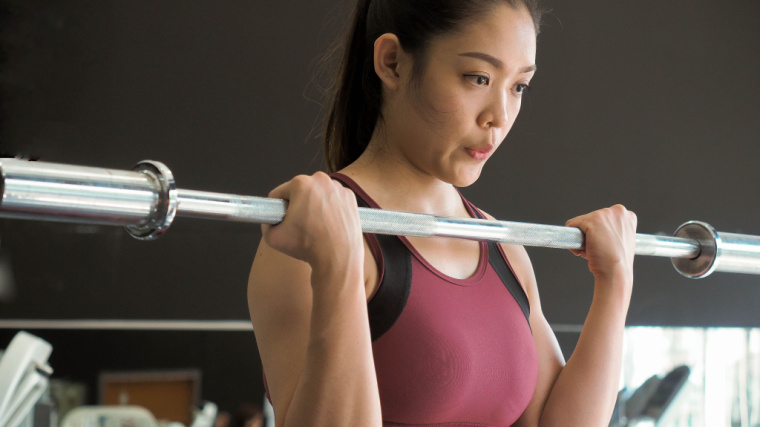
[Read More: Our Favorite Forearm Workouts, + the Best Forearm Exercises]
Scientific literature points to the answer being a compelling, but not totally confirmed, “yes.” Here’s the deal:
- Changing the position of your upper arm relative to your torso will affect which region of the biceps is placed under more stretch, and which areas have the best leverage to contract against a weight. (1)
- Working the biceps from a lengthened position appears to be ideal if you want to grow the long head (as in, your biceps peak) specifically. (2)
- Studies on other muscles show that even isolation moves like leg extensions can be tweaked to engage certain parts of the quadriceps. (3)
- The same principle may apply to your arms, but there isn’t any conclusive longitudinal evidence yet.
Put simply: How you set up for various types of curls will affect which head of your biceps brachii takes the brunt of the load, at least in theory. Some research backs this idea as credible, but there’s not very much definitive clinical evidence yet.
The Role of Genetics
You should also consider how your own genetics affects the way your muscles look. Arnold Schwarzenegger’s iconic physique was considered so, in part, because his biceps looked like they were about to pop off of his arm.
Short-inserting biceps will naturally peak more than longer ones when flexed. This is determined by where the biceps tendon actually attaches to your forearm and is entirely out of your control.
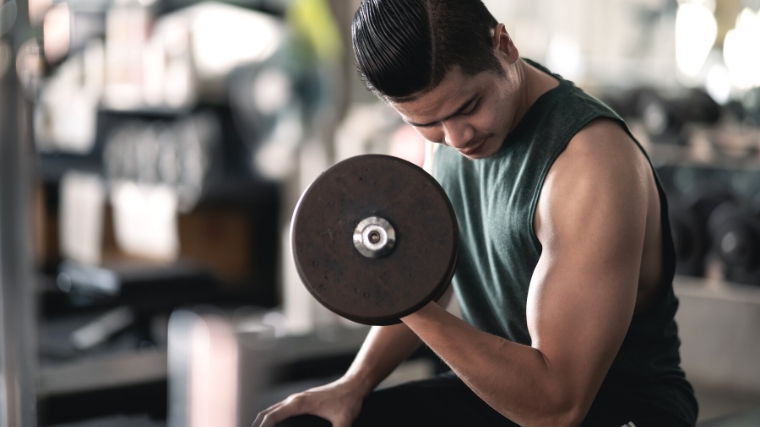
If, when you flex your arms, there’s a gap between your forearm and where your biceps begins, your insertions would be considered short. For developing a big peak, the shorter the better.
Biceps Training Tips
Evidence seems to suggest that you can build up your biceps peaks to a degree. To do so, you need the right exercises and a tactful approach to training itself. Use these tips to make your next arm day even more effective.
Sit Back
When your upper arm falls behind your shoulder, such as during a seated incline curl, the long head of your biceps is placed under significant stretch. Training a muscle from a stretched position is a fantastic way to get it to grow. When you perform incline curls or any similar move, ensure that your elbows stay pinned behind your body from start to finish.
Focus, Hard
The mind-muscle connection is as close to weight room magic as it gets. When you see a bodybuilder with their head down, brows furrowed, glaring at their arms in a trancelike state, they’re doing more than just putting in effort.
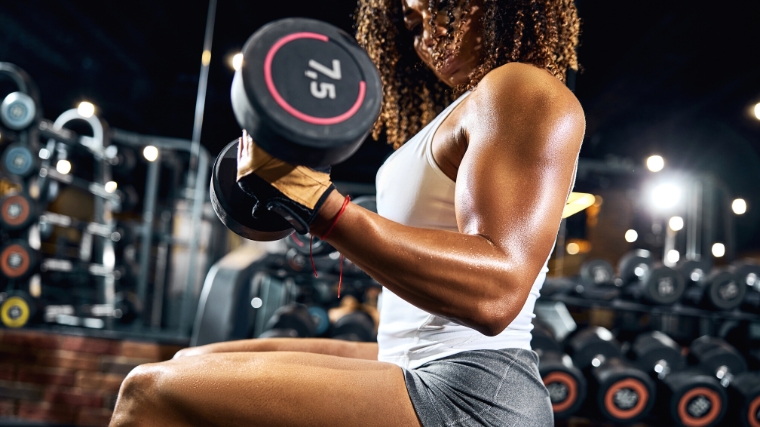
[Read More: The Best Biceps Exercises for a Muscle-Building Workout]
Research indicates that consciously thinking about contracting your muscles can help you grow. (4) A good mind-muscle connection is more than simply “feeling your arms” — you can feel your arms contract even without a weight in your hand. You should eliminate distractions and put all your mental energy into trying to pull your biceps off the bone when you curl. It shouldn’t be easy.
Use Cables
When possible, go for the cable machine. This isn’t just true for arm training (though it is a surefire way to burn your arms to a crisp), but it holds up especially well for targeting your biceps.
Working with free weights exposes you to the inconsistent tension of gravity. Free-weight curls are often easy to begin, very difficult through the middle of the range of motion, and easy again at the top. Reducing mechanical tension through almost half your range of motion isn’t ideal for growth.
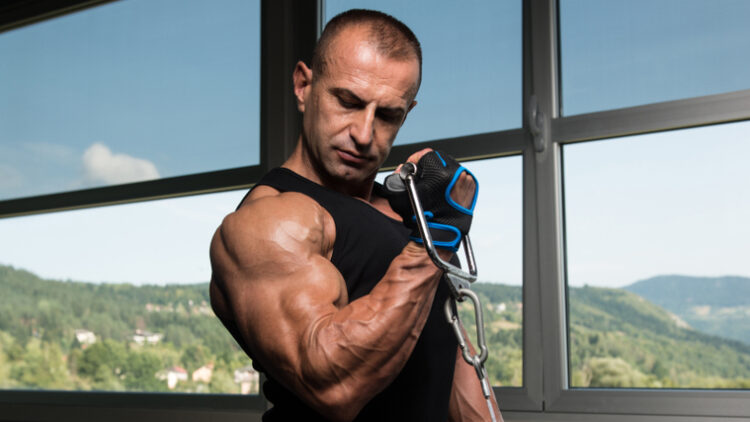
Cables solve this issue for you by their very design. You don’t necessarily need to do your entire arm workout at a cable station (though it might be a fun way to switch things up), but you should have at least one cable curl in your rotation on a regular basis.
Ascend the Peak
Building great biceps takes more than just barbell curls. To blow up your biceps peak, you need to train the long head of the tissue, which means getting creative.
Luckily, the right exercises in your pocket — and hearty helpings of effort on top of it all — can help you go the distance during your next arm workout. Try out these long head biceps exercises and see for yourself.
References
- Karunaharamoorthy, A. (2022, December 27). Biceps brachii muscle. Kenhub.
- Brown, J. M., Solomon, C., & Paton, M. (1993). Further evidence of functional differentiation within biceps brachii. Electromyography and clinical neurophysiology, 33(5), 301–309.
- Stoutenberg, M., Pluchino, A. P., Ma, F., Hoctor, J. E., & Signorile, J. F. (2005). The impact of foot position on electromyographical activity of the superficial quadriceps muscles during leg extension. Journal of strength and conditioning research, 19(4), 931–938.
- Schoenfeld, B. J., Vigotsky, A., Contreras, B., Golden, S., Alto, A., Larson, R., Winkelman, N., & Paoli, A. (2018). Differential effects of attentional focus strategies during long-term resistance training. European journal of sport science, 18(5), 705–712.
Featured Image: ArtOfPhotos / Shutterstock